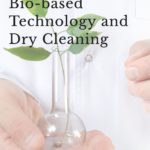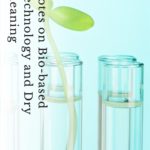Frequent readers will know we often discuss the biobased market, especially in connection with our USDA Certified BioPreferred® SOLVON K4. Biobased technology will continue to evolve and expand. When we initially converted from a petroleum-derived version of the solvent to a plant-based one, we were fortunate to have a partner in the Midwest supplying the product from locally sourced corn.
This company took an aggressive approach to a market and attempted to disrupt a supply chain with a much more earth-friendly version of a very cheap petroleum feedstock. As is true with many pioneers, they were ahead of their time. The market was not ready for them. They were unable to scale quickly and reach a point that the economic benefits of their product met their environmental benefits. Without a broad enough customer base, they were forced to close, eventually selling the plant to a new fermentation company that is helping the local growers by focusing their production on more mainstream and commercially viable bio-based products.
Emerging Bio-based Technology
What does this mean for SOLVONK4? In the short term, nothing, as we were well prepared for this and able to act quickly to secure large quantities of our needed feedstock.
Combined with the market slowdowns over the last several months, we can supply our corn-based SOLVONK4 for some time to come, but it does mean that change will happen.
Interestingly when we started researching alternative suppliers, we found very few, as most fermentation facilities focused on the vast and robust biofuels industry and not on the smaller specialty feedstock industry. As we dug around and started talking to more players in this space, we found a small but very vibrant group of companies looking at the same problem we were and presenting some amazing solutions in the process.
From the beginning, we were challenged with selling the idea of the conversion of corn into dry cleaning solvents. It is an excellent story for the professional textile care provider. The corn that was grown for this purpose was never usable for food, specifically designed to produce high starch content and grown with minimal water, herbicide, and pesticide. Still, the effort to grow produce and not use it to feed someone was and is a question that is challenging to answer. At that time, and still true today, it is unfortunately the path of least resistance to grow sugars needed in this industry. When you are competing against the global oil producers who can still pump drums of product for a few dollars, it matters to the final market price.
Today we are talking with companies who are testing and proving remarkable ways to capture carbon from nature and reuse it. Most common is the improved fermentation of rough biomass, stalk and grass, even surplus wood and algae, finding ways to take the “left over” materials from growing food and converting that into all sorts of compounds naturally coming from oil. On the far margins of this evolving technology is the process to strip carbon directly from the atmosphere as CO2 and use this carbon in low energy reactors to form alcohols and similar chemicals, a carbon-negative production cycle.
For Kreussler, as we look to transition from our corn-based feedstock inventories to something new, we have locked in supplies originating from sugar cane. Still, we are optimistic that a new production facility currently under construction. They are scheduled to start production Q2 of next year will offer our first supply of product from spent biomass, scrap plant material, including stalk and husk, which would normally be waste.
As things develop, we will keep everyone informed, but for now, it is still from corn to clean, USDA Certified BioPreferred®, and as safe and effective as always.




